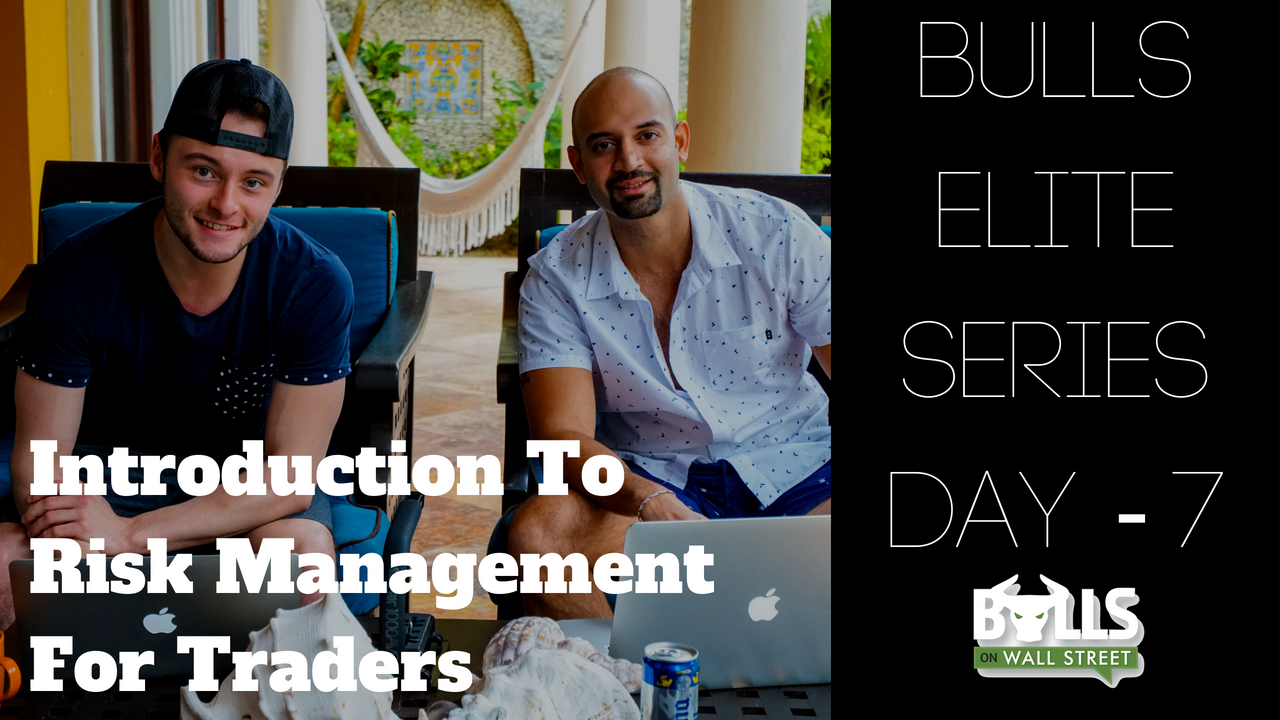
Risk management is an essential component of being a successful trader. It only takes one bad trade to blow up your account and end your career. Great risk managers understand the importance of sizing their positions according to the type of trade they are taking and what is going on in their surroundings. In order to maximize your profits and manage your downside risk you must fully understand numerous factors about the market.
The most important to understand is that no system has a 100% win rate. The best traders rarely have a win rate more than 75%. You have to expect losers, and keep them small, regardless of how good your win rate is. You can actually be a profitable trader with a 40% win rate if your risk to reward ratio is good enough. Risk management is the difference between winning and losing traders in the long run. Let’s talk about how to determine your level of risk on your trades, and tips for keeping your losers small.
Risk Management 101
There’s an important difference between a stock picker and a trader. A trader knows and follows a rules-based system, using tactics and strategy to put the risk to reward ratio of his trades to his favor. Great stock pickers may not make any money from the stock market, because they have poor risk management and position sizing. The best traders aren’t the best because of their ability to find stocks that will appreciate in value. They are the best because of their ability to manage risk and time their entries and exits.
For years when I started out I was a great stock picker, but a terrible manager of risk. I would consistently find stocks that would make huge moves in a short period of time, but I couldn’t make money in the long run because I couldn’t manage my risk. I would make consistent money for 3 weeks in a row and then give it all back in a few days.
For our system, we always want to find trades that give us at least 2:1 or 3:1 on our reward vs risk. This means that for every setup, the most you can lose if the stock goes against you and you stop out is ½ or ⅓ of what you would expect to gain if it plays out to your target. If you keep a 2:1 ratio you only need to be correct 35% of the time to make money. For example, let’s say you make 1000 trades over the course of the year and 350 make a $2000 profit and 650 you lose $1000, you will actually end up making $50,000 that year. You’ve actually made a profit with a terrible win rate because you managed your risk correctly.
Determining Risk To Reward Ratio and Position Sizes
When you are looking a trade there are two things to consider. One is the probability of success on the particular setup. The other one is the amount of money you risk. You determine risk by seeing what your potential losses are on a trade, based on a where you put your stop loss. For example, if you have a $5 stock, a $.25 cent stop, and potential gain of $.50 cents, your risk to reward is 2:1. If you wanted to risk $250 on the trade, would you buy 1000 shares. Your potential reward would be $500. You have to figure out how much money you will risk and where your stop loss will go BEFORE you enter a trade in order to figure out how many shares to buy or short.
Position Sizing
Another key determinant to your returns is how you size your position for each trade. Given the same price entry and exit on your trades, your gains will be a function of how much you risk on each trade and your position size. You cannot risk your whole portfolio on a single trade, given that any trade has a chance to be a loser. What determines how much money you risk per trade is your risk tolerance and your portfolio size.
What we do at BOWS is use a percentage risk model. We recommend new traders to risk no more than 1% of their portfolio on any given trade. As a new trader, it may take time for you to develop a profitable strategy, and you need to keep your account alive long enough so you can develop the skill set to become a profitable trader. What does 1% mean? It means that’s how much you will lose on a trade if my stop loss is hit. If you have a $50,000 account, you will be risking at most $500 per trade.
The actual size of your trade might be large in terms of the percentage of your account being invested. You could have 40% of the capital in your account invested in the trade, but the actual amount of money you risk losing is only 1% of your account. This is because risk equals the price you buy minus stop. Going back to the example with a $50k account: Let’s say you buy $20,000 worth of NVDA stock at $250 per share. If your stop loss is going at $243.75, you will buy 80 shares of this stock. As a result, you will be risking only $500, 1% of your portfolio, even though you are buying $20,000 worth of stock.
Sign Up For The Free 4-Day Live Course
Risk management is complex subject, and we will go into more depth in our free 4-day live course later this month. If you missed our last post of the Bulls Elite Series breaking down how to identify stock trends, you can check it out here.
Reserve your seat for the free 4-day live course here.
PS if you’re coming let us know on Facebook and share this event with your friends. Click here to join our Facebook event.
[rf_contest contest=’10758′]


